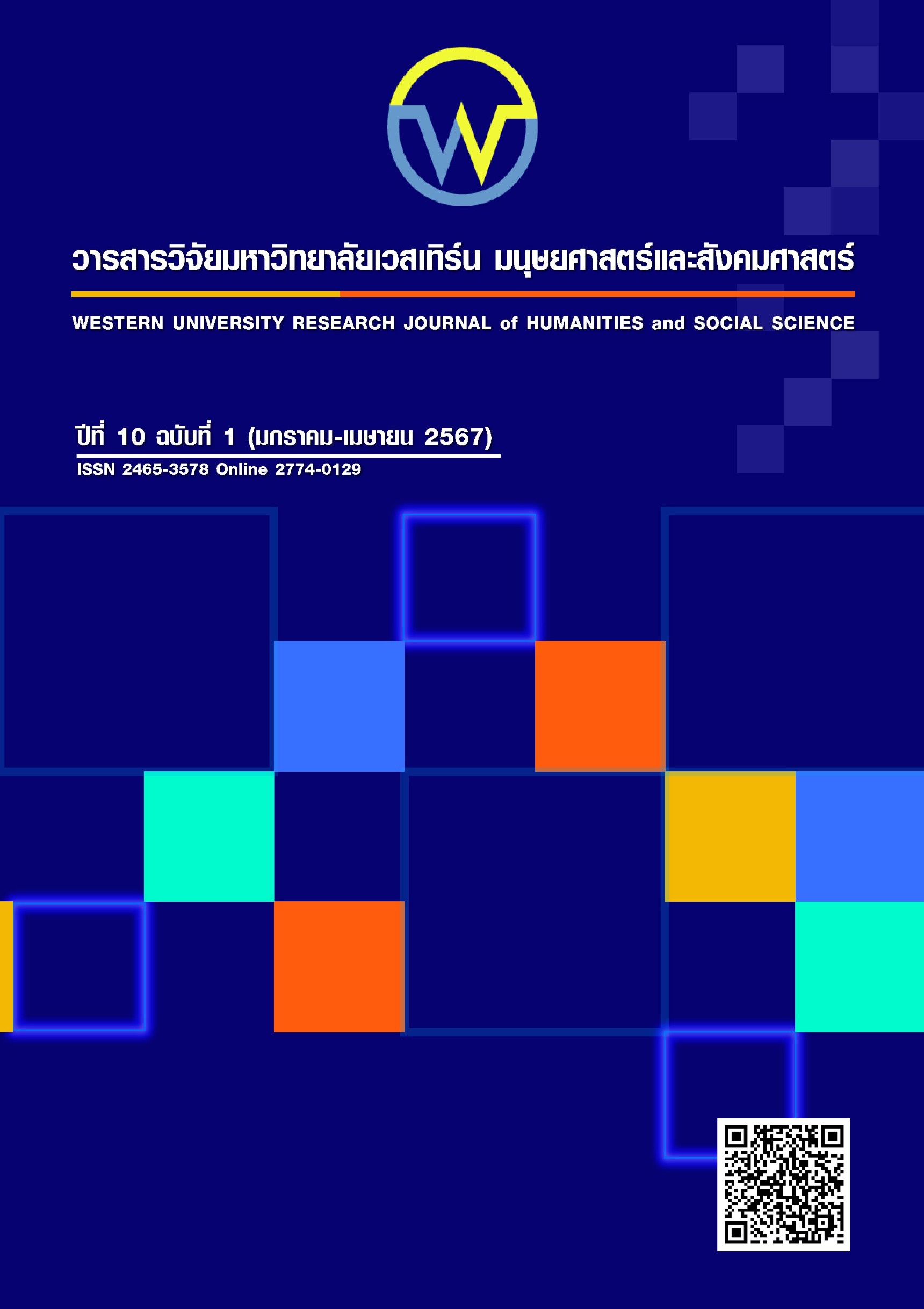แบบจำลองความสัมพันธ์การรับรู้คุณค่าตราสินค้าและองค์ประกอบแพลตฟอร์มพาณิชย์อิเล็กทรอนิกส์ที่ส่งผลต่อการตัดสินใจซื้อสินค้า OTOP จากกลุ่มจังหวัดภาคเหนือตอนล่าง 1 ของนักท่องเที่ยวไทย
Main Article Content
บทคัดย่อ
การศึกษานี้มีวัตถุประสงค์เพื่อ วิเคราะห์อิทธิพลการรับรู้คุณค่าตราสินค้าและองค์ประกอบแพลตฟอร์มพาณิชย์อิเล็กทรอนิกส์ที่มีต่อการตัดสินใจซื้อสินค้า OTOP จากกลุ่มจังหวัดภาคเหนือตอนล่าง 1 ผ่านการซื้อขายออนไลน์ของนักท่องเที่ยวไทย อาศัยแบบสอบถามในการเก็บข้อมูลจากนักท่องเที่ยวไทยในกลุ่มจังหวัดภาคเหนือตอนล่าง 1 จำนวน 385 ราย ใช้การสุ่มตัวอย่างแบบโควต้า ทำการวิเคราะห์แบบจำลองสมการโครงสร้าง ผลการศึกษา พบว่า แบบจำลองการรับรู้คุณค่าตราสินค้าและองค์ประกอบแพลตฟอร์มพาณิชย์อิเล็กทรอนิกส์ที่ส่งผลต่อการตัดสินใจซื้อสินค้า OTOP จากกลุ่มจังหวัดภาคเหนือตอนล่าง 1 ผ่านการซื้อขายออนไลน์ของนักท่องเที่ยวไทยมีความสอดคล้องกับข้อมูลเชิงประจักษ์ โดยอิทธิพลของการรับรู้คุณค่าตราสินค้าและองค์ประกอบแพลตฟอร์มพาณิชย์อิเล็กทรอนิกส์ที่มีต่อการตัดสินใจซื้อสินค้า OTOP จากกลุ่มจังหวัดภาคเหนือตอนล่าง 1 ผ่านการซื้อขายออนไลน์ของนักท่องเที่ยวไทยมีค่าเท่ากับ 0.67 และ 0.71 ตามลำดับ การวิจัยนี้สามารถใช้เป็นแนวทางการในการพัฒนาการรับรู้คุณค่าตราสินค้าและองค์ประกอบแพลตฟอร์มพาณิชย์อิเล็กทรอนิกส (7Cs) เพื่อตอบสนองต่อกระบวนการซื้อสินค้าในโครงการ OTOP ในกลุ่มจังหวัดภาคเหนือตอนล่าง 1
Article Details

อนุญาตภายใต้เงื่อนไข Creative Commons Attribution-NonCommercial-NoDerivatives 4.0 International License.
เอกสารอ้างอิง
กลุ่มงานบริหารยุทธศาสตร์กลุ่มจังหวัดภาคเหนือตอนล่าง 1. (2566). แผนพัฒนากลุ่มจังหวัดภาคเหนือตอนล่าง 1 (พ.ศ. 2566 – 2570). สืบค้นเมื่อ 24 กรกฎาคม 2566, จาก http://www.osmnorth-s1.moi.go.th/storage/roadmap/pdf.
กองพาณิชย์อิเล็กทรอนิกส์ กรมพัฒนาธุรกิจการค้า. (2562). พาณิชย์ย้ำ การค้ายุคปัจจุบันต้องพัฒนาทั้ง "ช่องทางการตลาด" และ "คน" ไปพร้อมกัน. สืบค้นเมื่อ 25 กรกฎาคม 2566, จาก https://www.facebook.com/415527945210102/posts/2162132390549640/.
เกตุวดี สมบูรณ์ทวี. (2562). ปัจจัยที่มีผลต่อการตัดสินใจซื้อรองเท้าแฟชั่นตราสินค้าหนึ่งผ่านช่องทางออนไลน์. วารสารนิเทศศาสตร์และนวัตกรรม, 6(1), 1-18.
เขมรัตน์ บุญหล่อสุวรรณ์. (2562). การศึกษาประสบการณ์การใช้งานดิจิทัลแพลตฟอร์มเพื่อสนับสนุนการสอนของครู. การค้นคว้าอิสระปริญญานิเทศศาสตรมหาบัณฑิต. บัณฑิตวิทยาลัย. มหาวิทยาลัยกรุงเทพ.
วัลลภา พัฒนา และอันธิกา ทิพย์จำนงค์. (2563). คุณค่าตราสินค้าส่งผลต่อการตัดสินใจซื้อผลิตภัณฑ์ OTOP ในเขตจังหวัดสงขลา. วารสารศรีนครินทรวิโรฒวิจัยและพัฒนา, 12(23), 63-72.
อภิชา พิพัฒศุนธา. (2563). ปัจจัยที่มีอิทธิพลต่อการตัดสินใจซื้อผลิตภัณฑ์แซมโซไนท์ผ่านตลาดกลางพาณิชย์อิเล็กทรอนิกส์. วิทยานิพนธ์ปริญญาบริหารธุรกิจมหาบัณฑิต. บัณฑิตวิทยาลัย. มหาวิทยาลัยศรีนครินทรวิโรฒ.
Aaker, D. A. (1991). Managing brand equity: Capitalizing on the value of a brand name. New York: The Free Press.
Alwan, M., & Alshurideh, M. (2022). The effect of digital marketing on purchase intention: Moderating effect of brand equity. International Journal of Data and Network Science, 6(3), 837-848.
Beig, F. A., & Nika, F. A. (2022). Impact of brand experience on brand equity of online shopping portals: A study of select e-commerce sites in the state of Jammu and Kashmir. Global business review, 23(1), 156-175.
Cochran, W.G. (1977). Sampling techni-ques. (3rd ed). New York: John Wiley & Sons.
Coelho, P. S., Rita, P., & Santos, Z. R. (2018). On the relationship between consumer-brand identification, brand community, and brand loyalty. Journal of Retailing and Consumer Services, 43, 101-110.
Cronbach, L. J. (1970). Essentials of Psychological Testing. New York: Harper & Row.
Grigaliunaite, V. & Pileliene, L. (2017). How Do Brand Associations Affect Purchase Intentions? A Case of Organic Products. Research for Rural Development, 2, 210-216.
Hair, J. F. (Jr.), Hult, G. T. M., Ringle, C. M., & Sarstedt, M. (2014). A Primer on Partial Least Squares Structural Equation Modeling (PLS-SEM). Thousand Oaks, CA: Sage Publications.
Inkuer, A. (2023). Perceived Brand Equity Influencing Intention Behavior of OTOP Natwatwithi Tourism Community. In International Academic Multidisiplinary Research, Conference in Munich 2023, 112-116.
Keller, K. L. (1993). Conceptualizing, measuring, and managing customer-based brand equity. Journal of marketing, 57(1), 1-22.
Kotler, P., & Armstrong, G. (2011). Principles of Marketing. (14th ed) NJ: Prentice Hall.
Kureerung, P., Ramingwong, L., & Ramingwong, S. (2021, May). User Interface Redesigning Based on a Usability Design Framework. In 2021 18th International Conference on Electrical Engineering/Electronics, Computer, Telecommunications and Information Technology (ECTI-CON). (pp. 307-310). IEEE.
Liu, W. (2021). Research on the application of multimedia elements in visual communication art under the Internet background. Mobile Information Systems,1-10, Retrieved from https://doi.org/10.1155/2021/5525648.
Majeed, M., Owusu-Ansah, M., & Ashmond, A. A. (2021). The influence of social media on purchase intention: The mediating role of brand equity. Cogent Business & Management, 8(1), 1-19.
Nazia, Y., Mariam, T., Amir, G., & Ayesha, A. (2011). Impact of Brand Awareness, Perceived Quality and Customer Loyalty on Brand Profitability and Purchase. Journal of Contemporary Research in Business, 3(8), 833-839.
Nithichaowakul, T. (2015). Creating Brand Value Through the One Tambon One Product. Journal of the Humanities and Social Sciences. 23(42), 149-168.
Pappu, R., & Quester, P. G. (2016). How does brand innovativeness affect brand loyalty?. European Journal of Marketing, 50(1/2), 2-28.
Rayport, J. & Jaworski, B. (2001). Introduction to E–Commerce. New York: McGraw-Hill.
Rovinelli, R. J., & Hambleton, R. K. (1977). On the use of content specialists in the assessment of criterion-referenced test item validity. Dutch Journal of Educational Research, 2, 49-60.
Rubio, N., Villaseñor, N., & Yagüe, M. J. (2017). Creation of consumer loyalty and trust in the retailer through store brands: The moderating effect of choice of store brand name. Journal of Retailing and Consumer Services, 34, 358-368.
Sakara, A., & Alhassan, F. (2014). An Assessment of Brand Equity and Brand Image Influces The Purchase Behavior of Female Cosmetic Consumers: A Case of Career Women in Ghana. International Journal of Economics, Commerce and Management, 2(10), 1-14.
Schermelleh-Engel, K., Moosbrugger, H., & Muller H. (2003). Evaluating the fit of structural equation models: tests of significance and goodness-of-fit models. Methods of Psychological Research Online, 8, 23-74.
Vardanidze, T., & Benedek, A. (2019). Online business analysis on the bases of 7c elements. Acta Carolus Robertus, 9(2), 187-197.
Wahyuni, S., & Praninta, A. (2021). The influence of brand equity and service quality on purchase decisions on Garuda Indonesia airline services. Research Horizon, 1(1), 28-38.
Yadav, M. S., De Valck, K., Hennig-Thurau, T., Hoffman, D. L., & Spann, M. (2013). Social commerce: a contingency framework for assessing marketing potential. Journal of interactive marketing, 27(4), 311-323.
Yang, H., & Lee, H. (2019). Understanding user behavior of virtual personal assistant devices. Information Systems and e-Business Management, 17(1), 65-87.
Zhang, K. Z., & Benyoucef, M. (2016). Consumer behavior in social commerce: A literature review. Decision Support Systems, 86, 95-108.


